Designing the Food Market of the Future
Before there were farmers’ markets, there were public markets. New Orleans is bringing them back.
They’re at the center of every neighborhood. On a corner, or at a major intersection: big, barn-like buildings, architecturally distinct from the houses that surround them. Maybe they have terra-cotta shingles on the top, in a strange anomaly of Spanish architecture. Maybe they function as a grocery store, or house fancy apartments. Maybe they’ve been boarded up for years.
While cities all over the country operated public markets during the mid-19th century, New Orleans took the cake. Its distinct neighborhoods inspired a larger network than anywhere else in the country. At its peak, the city ran 34 markets throughout the city.
The markets were reflections of a changing city. During the 1820s, New Orleans’ population had begun to grow pretty quickly. People moved beyond the French Quarter and into different pockets of the crescent that lined the Mississippi. But it took longer for transportation to catch up to the population growth — it wasn’t easy to get from one section of the city to another. So, each neighborhood developed its own amenities. No matter where you lived, a market would be within walking distance. The markets were iconic buildings, usually positioned in the center of the neighborhood. They sold produce, meat and dairy in the morning. As the day wore on, the ice melted and food couldn’t be kept cold any longer. So in the afternoons and evenings, the markets stopped functioning as markets, but still served as gathering spaces. They were the hubs of their community, hosting events like political rallies and concerts.
This dynamic lasted for the next century. But in the 1940s, as people moved even farther out of the city center and cars became more popular, people didn’t need to walk to the market anymore. They could drive to where they wanted to shop. And there were more options: Advanced refrigeration technology allowed food to stay cold for longer. Louisiana’s Schwegmann family opened their first supermarkets in 1946.
With fewer shoppers, it became hard for New Orleans to justify the operation of all these neighborhood markets. In 1941, the city auctioned them off. Many of them went to private operators and continued to be run as grocery stores. Others were converted into residential spaces. Some fell into disrepair.
When Hurricane Katrina hit 10 years ago, it proved to be a deadly blow for many of these already fragile structures. The era of demolition by neglect was over; hurricane winds and floodwaters left buildings like the old St. Roch Market destroyed. Yet the disaster and subsequent recovery process also put new focus on the city’s historic assets, including the long-neglected markets. As devastated neighborhoods began to rebuild, residents and developers began to consider new possibilities for these old structures, and today, many are in the throes of redevelopment. Some will spring back to life as upscale, foodie-friendly reprises of what was there before while others are being revived with new uses that reflect the growing city they inhabit.
Beth Jacob is an architect and historian whose research specializes in the historic preservation and adaptive reuse of New Orleans’ public markets. Jacob found that the markets did more than just offer a space for communities to buy staples. They were true neighborhood places and served as anchors that attracted other businesses to the area.
“Historically,” she explains, “markets really functioned as gathering places. And they were a source of identity for neighborhoods.”
For example, there were always banks built near markets. These institutions often bore the name of not just the area, but of the market too. In New Orleans’ Central City neighborhood, across the street from the old Dryades Market, you’ll find not just the Dryades bank branch, but the Dryades Market bank branch. Jacob says community identity was derived from the markets across all socioeconomic strata.
“At one point, for the St. Mary’s Market, there was a gang that ran in the neighborhood, the St. Mary’s Market Gang. So markets were something that people would often use to describe where they lived and what their neighborhood was,” she says.
Keeping in mind this notion of markets informing place-based identity, I recently explored three of the city’s most exciting market transformations to find out what their respective reincarnations can tell us about New Orleans today.
Foodie’s Paradise
When the city disinvested from its public markets in the 1940s, it retained ownership of just two. The first is the French Market in the French Quarter, which functions now as mostly a tourist attraction, and the second is the St. Roch Market, on the border of the developing Marigny neighborhood. Cedric Grant is the executive director of the New Orleans Building Corporation, the city entity working to redevelop the market. Not even he knows why the city still owns the market.
“It came as a surprise to me, quite honestly, post-Katrina that we ended up in a situation that we were in control of the St. Roch Market,” he says. “The city owns stuff you wouldn’t believe.”
St. Roch Market sits on St. Claude Avenue, the dividing line between the working-class St. Roch neighborhood and the trendy Marigny, where the average home lists at a price north of $400,000 (compared to $117,000 on the other side of St. Claude). It’s a street in transition: An all-night po’boy shop painted hot pink sells frozen daiquiris out of its side entrance; vacant buildings are scattered among modest art galleries; a developer-sponsored Healing Center complex houses a performance space, a food co-op and a fitness center. Young transplants and longtime locals alike frequent the avenue’s bars for karaoke and cheap beer.
For years, the city leased the building to a private operator, which ran it as a seafood market. But after Katrina, the 6,800-square-foot market was abandoned and the city took over responsibility, using FEMA dollars to give it a $3.7 million renovation. Suddenly, the city had control over a landmark building on one of the city’s dynamic corridors.
“The easy part was the dollars to restore the market,” says Grant. The city never planned to run the market, but it repaired the mechanical systems and structural framework, so that it was in a condition where it could be marketed for an operator. Who that operator would be was the big question. It was hard to find someone willing to take on a risky enterprise, keep the interests of the community in mind and commit to a business model that would turn a profit. Not to mention the city wanted a market that would contribute something new to the city, something creative.
“In all of our post-Katrina work, what we find is that people want what they had, except they didn’t understand that what they had was very difficult to have to begin with,” Grant says. “And now you have to really imagine something new.”
The winning bid went to Bayou Secret, an enterprise started by the same people who run a local startup incubator called Launch Pad. Will Donaldson is heading the project. He says that Bayou Secret wants St. Roch to look like the food hall it once was, 100 years ago.
“It’s a place that was a community center as much as it was anything else,” says Donaldson. “You would go into it, and you could order a plate of food or you could carry away a bag of groceries; at any given time it was neighborhood-centric.”
The look of the market comes pretty close to the way it probably looked in 1945 when it was renovated as part of the WPA, but the feel will be closer to a foodie market destination like Essex Street Market in New York’s Lower East Side.
When St. Roch Market opens for business in April, there will be 13 individual vendors, or small businesses really, to choose from. There’s everything from a raw oyster bar and a local coffee roaster to Korean and Creole fusion food.
Critics have pointed out that high-end specialty foods may not work to serve the needs of the surrounding community. But Donaldson says that the market is committed to the community, and to keeping prices affordable.
“As a basic gauge, we walk next door to Rally’s [hamburger chain] every day and look at the pricing over there. A lot of people in the neighborhood eat fast food because fast food’s cheap. More than 40 percent of our menu is available for cheaper than it would cost to shop at Rally’s.”
Donaldson says the market’s butcher will offer a high-quality, $5 sandwich, and the juice bar will serve a fresh-pressed juice for $3. At the same time, Bayou Secret does take a percentage of gross sales to cover its operating costs. One local business owner told me she applied to be a vendor at the market, but when she found out she’d have to forgo 30 percent of her profits, at least at first, she couldn’t imagine making ends meet.
Donaldson points out that vendors get in the door for a fraction of what they would if they were opening up their own restaurant. Cedric Grant from the city says he trusts Bayou Secret will do what they need to in order to succeed.
“This is a business deal at the end of the day,” he says, “And we can’t afford to carry it, so we need someone that can make it work and work with the community and deliver a quality product. I think they’re going to try to maintain and keep it reasonable, but there’s no subsidy here,” he says. “The market’s the market.”
A Living Museum
In the 1930s and ’40s, Oretha Castle Haley Boulevard, formerly known as Dryades Street, was the largest black shopping district in the city. It played host to large-scale department stores, a public elementary school, the Free Southern Theater and the Dryades Market. But as people moved out of the urban center and the city became desegregated, black New Orleanians started doing more of their shopping elsewhere. Businesses on Dryades started to close, and the city auctioned off the Dryades Market in 1941.
It housed a number of operations over the years, but sat vacant for many — as did most buildings on what’s called O.C. Haley. Now, slowly, the corridor is gaining traction again. Coffee shops, nonprofits and community arts organizations have started to make it home. But some of the spaces with more square footage have been trickier to fill. The risk is too great for most entrepreneurs. Not Liz Williams, president of the Southern Food and Beverage Museum (or SOFAB). Williams sensed potential in the old market and saw its old bones as the perfect complement to the nonprofit museum’s mission to celebrate the food and drink of the South.
“We saw that this neighborhood was about to experience a renaissance, and we though we could be a part of it,” says Williams. In November, SOFAB welcomed visitors to a new home inside the old market.
The museum used to sit on the New Orleans Riverwalk, nestled between the French Quarter and Central Business District. As the only museum of its kind in the U.S., it drew a crowd. Williams says she’s confident it will do the same in its new home, bringing tourists to a neighborhood they likely would not otherwise visit. Beth Jacob is optimistic that the museum could function as a neighborhood attraction in the same way the Dryades Market did, as a gathering place and source of neighborhood identity. Williams, for her part, has plans to help that along. This year, SOFAB will host programs for school-aged kids in the neighborhood and offer an incubator kitchen for community members who are trying to get their businesses off the ground.
“It might not be selling food but it is food related and it’s bringing people together around the concept of food,” Williams says. “And I think that’s pretty important.”
The Neighborhood Resource, Now and Then
Before Hurricane Katrina hit, the Circle Food Store had it all. Owner and manager Dwayne Boudreaux says he wanted the store to speak to its roots, and function as a marketplace. (Eight years after the space opened as St. Bernard Market in 1931, a produce vendor named Herbert Gabriel bought it and it became the first black-owned supermarket in the country.)
“We were here running a full one-stop grocery store,” he says, “selling everything from school uniforms to fresh produce … china, ironing boards, toasters.”
During the 2005 flooding, the store took on about five feet of standing water and had to shut it doors. Boudreaux says when he came back to the city, he took a look around him and couldn’t imagine that the neighborhood could support the store, even if he could afford to reopen it.
“I looked back and said, “wow, there’s nobody here.” The neighborhood was maybe 20 percent, 25 percent back. So I wasn’t ready.
But Circle Food has always had a lot of fans. It was known for offering rare game like rabbit, turtle meat and other specialty ingredients. Employees hailed almost exclusively from the surrounding 7th Ward. So despite Boudreaux’s decision to hold off on reopening, the residents who returned were waiting with bated breath.
“It took on a greater importance than just the opening of the store,” says Beth Jacob. “Like, if that can come back, the neighborhood is going to be OK.”
Boudreaux says in the years following the storm, he worked tirelessly to put the financing together to get the store back open. “It seemed like everybody wanted to do it, but no one would take that initial first step,” he says. Finally, the city announced a loan program called the Fresh Food Finance Initiative that would give him the $1 million push he needed to get up and running.
With the support from the city, he’s been able to restore the market so that it more closely resembles what it would’ve looked like in its initial form as the St. Bernard Market. He restored its Spanish terra-cotta roofing and got rid of the 10-foot drop ceilings that crowded the store pre-Katrina, exposing 24-foot ceilings supported by slender metal floor beams. But while the interior feels more ’30s than ’80s, Boudreaux held onto neon signage that made the store recognizable to drivers passing on the Interstate overpass that cuts through the neighborhood. Circle Food re-opened last January, and Boudreaux says business is good. But he’s had to make some adjustments.
“As we opened up we realized, ‘wow, the neighborhood has changed.’ Even though we still sell the traditional stuff we’ve always sold, now we’re selling bok choy and ginger beer and soy milk … fresh dill and tofu.”
In a lot of ways, Circle Food feels like it speaks the closest to the original public market model. People who shop there live nearby. Many of them don’t have cars, and walk or bike to the store. It is and always has been valued as an iconic resource and emblem for the neighborhood. And while the demographic may have changed, that doesn’t matter for Boudreaux.
“There’s a different community now and we’ve always been a store that caters to the community, no matter who that may be,” he says.
The public market network in New Orleans will never resemble its previous system; the markets’ primary function is not as essential to every day life. But they can still offer New Orleans neighborhoods an opportunity to establish a sense of identity. And as many of the neighborhoods continue to reinvent themselves, it becomes all the more important for those institutions at the center — both geographically and symbolically — to reflect or even set that new tone.
Our features are made possible with generous support from The Ford Foundation.
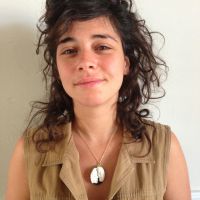
Nina Feldman is an independent journalist focused on audio production, based in New Orleans. She makes stories about community development for local NPR affiliate WWNO, and her work has appeared on national programs like State of the Re:Union and NPR’s Latino USA.



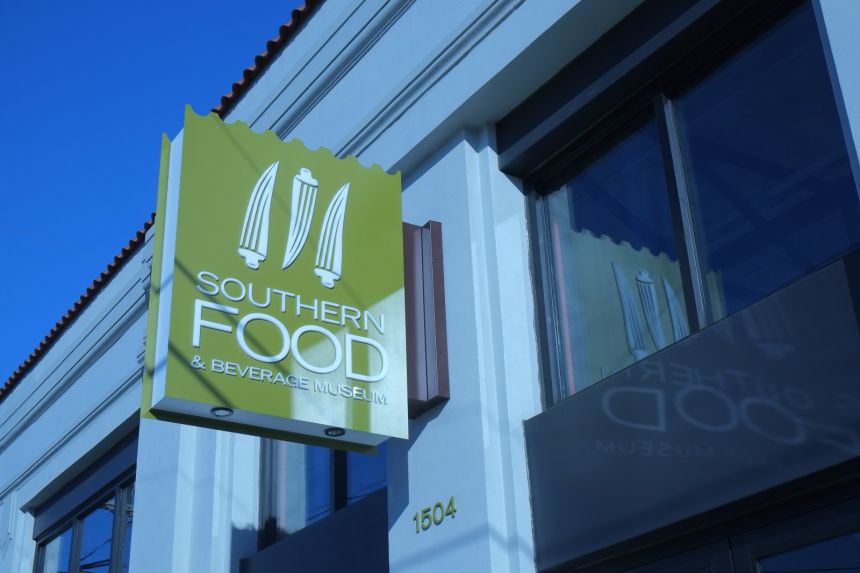
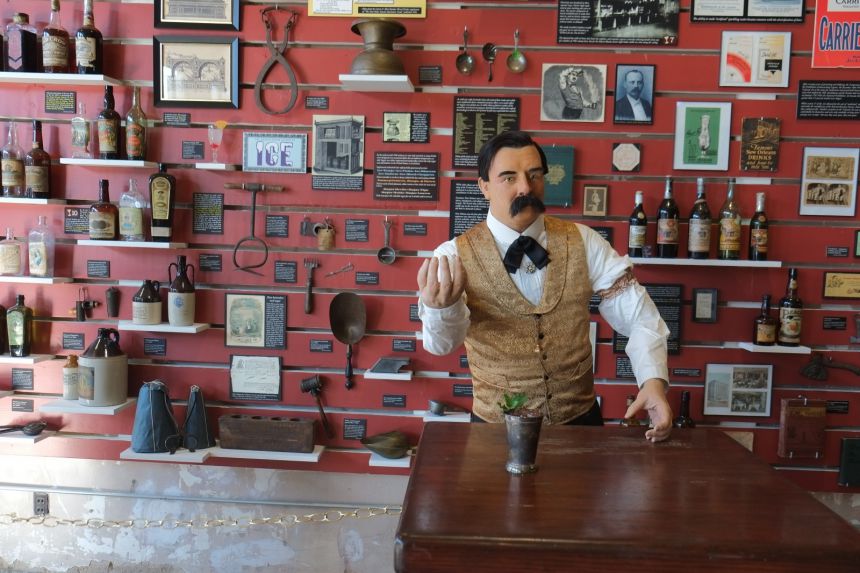
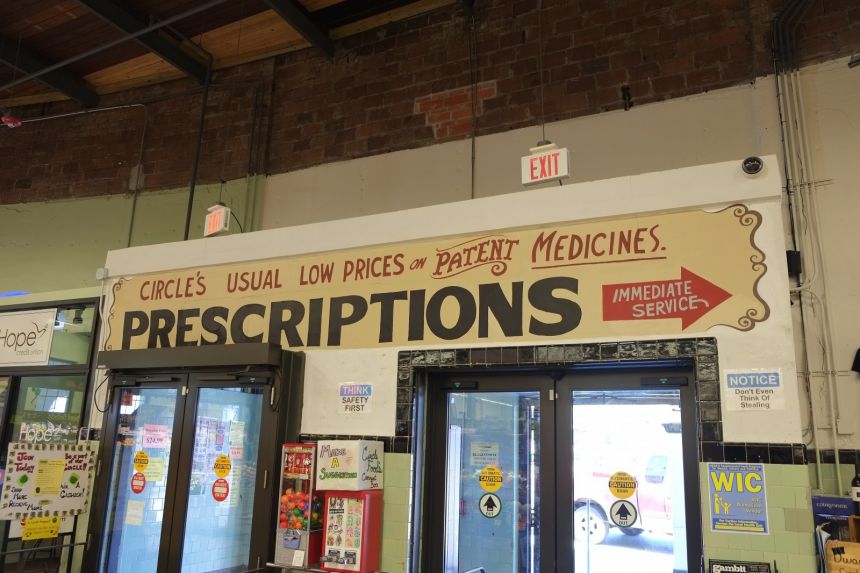
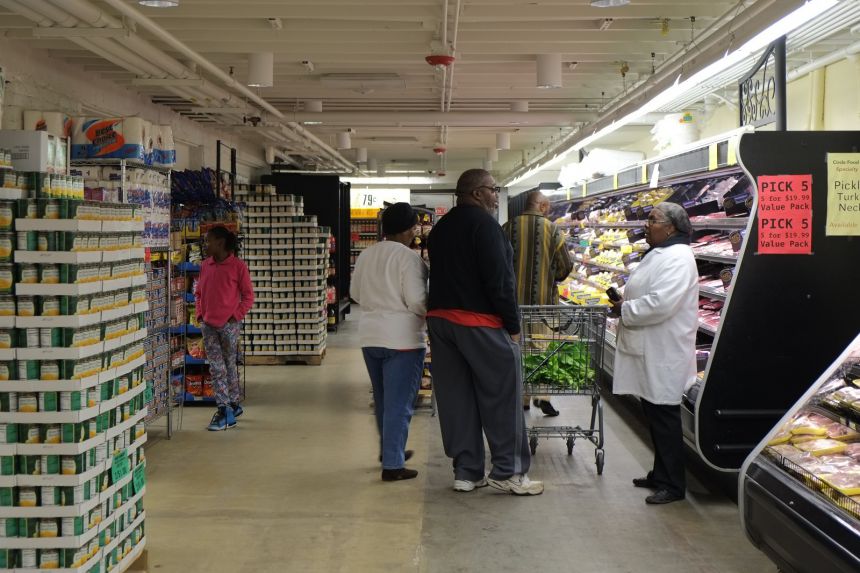
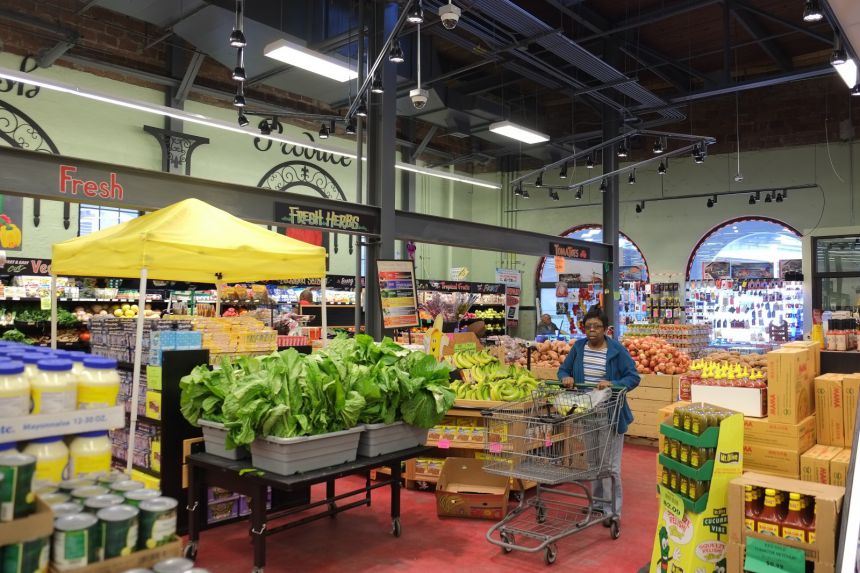
No comments:
Post a Comment
Please leave a comment-- or suggestions, particularly of topics and places you'd like to see covered